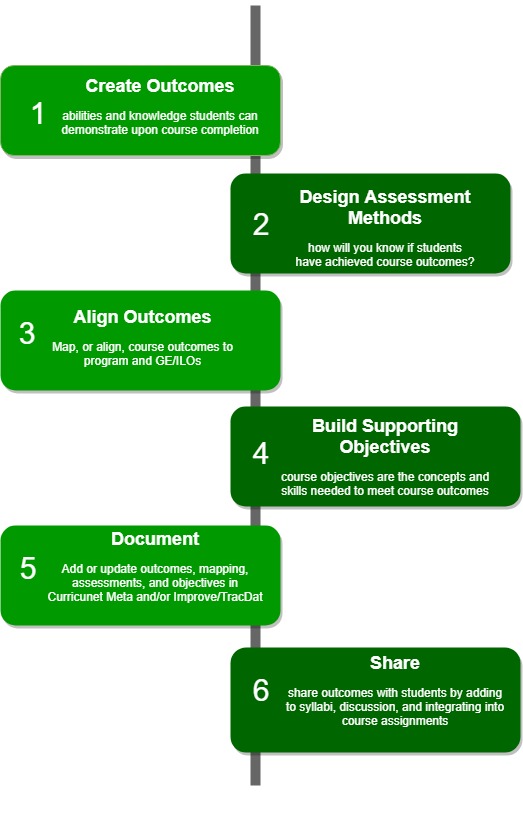Step 1. Define Outcomes
The first step to improvement as well as curriculum design is defining the outcomes that students should be able to meet upon completing a course or program of study. Outcomes are the measurable knowledge, skills and abilities that students are able to demonstrate subsequent to completing the course (as opposed to objectives which are discrete skills and concepts students should learn in order to meet the course outcomes). Each course should have at least two measurable student learning outcomes. When developing course and program outcomes, faculty should consider the skills and knowledge needed within a field of study, trade or career, or that help students think critically, engage civically and become lifelong learners.
The practical steps to developing, integrating, sharing and documenting outcomes at Palomar are presented below:
- Define outcomes – the abilities and knowledge students can demonstrate upon course or program completion.
Create at least 2 outcomes for each course and program.
- Design assessment methods – how will you know if students have achieved the outcomes.
- Align outcomes – map, or align course outcomes and program outcomes to program and general education/institutional outcomes.
- Build supporting objectives – objectives state the concepts or skills needed to meet the outcomes. Objectives are the means, not the ends. They are the building blocks designed to help students to achieve the course learning outcomes. Objectives may or may not be written as measurable terms.
- Document – add or update outcomes, assessments, mapping and objectives in Curricunet Meta and/or Nuventive Improve (TracDat).
- Share – share outcomes with students by adding to syllabi, through discussion, and integrating into course assignments.
Resources
Defining Outcomes
- Developing Outcomes and Objectives for the COR & Syllabus, Palomar College
- Sample Course Outcomes
- How do Outcomes Differ from Objectives
- How to Write Program Outcomes
- Bloom’s Taxonomy
- Designing Student Learning Outcomes (SLOs) to Improve Instruction, ASCCC
Aligning (Mapping) Outcomes
Steps to Defining Outcomes


